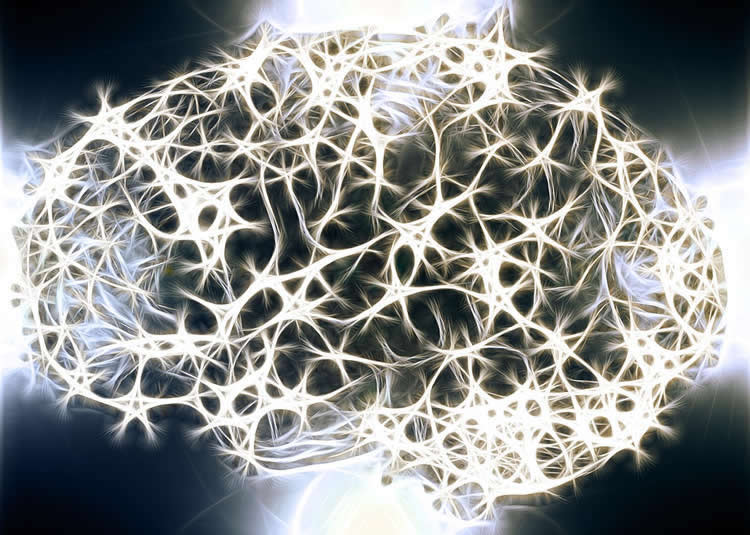Summary: Researchers have identified three molecules they believe could be key for memory and learning.
Source: Goethe University Frankfurt.
Learning and memory are two important functions of the brain that are based on the brain’s plasticity. Scientists from Goethe University Frankfurt report in the latest issue of the scientific journal “Cell Reports” how a trio of key molecules directs these processes. Their findings provide new leads for the therapy of Alzheimer’s disease.
The brain is able to adapt to new situations through changing, building or reducing the contact points between nerve cells (synapses). In particular, the signal strength is regulated by constantly altering the abundance of receptors in the membrane of nerve cells. This explains why it is easier to remember information that we use frequently as opposed to information that we learned years ago and do not use anymore.
Amparo Acker-Palmer’s research group at the Institute of Cell Biology and Neuroscience of the Goethe University focused in their study on AMPA receptors, which are the main transmitters of the stimulating signals. Nerve cells in the hippocampus, the brain region responsible for learning and memory, are able to alter the number of their “switched-on” receptors by extending or retracting them like antennae thereby regulating the strength of a signal. The Frankfurt scientists discovered that three key molecules are involved in this regulation: GRIP1, ephrinB2 and ApoER2, the latter being a receptor for the signalling molecule Reelin.
“These results are fascinating since it has been known for years that ephrinB2 as well as Reelin are essential for the development of the brain “ explains Amparo Acker-Palmer. “Furthermore, earlier work in my lab has shown that there is an interaction between the Reelin signalling pathway and ephrinBs when neurons migrate during brain maturation.”

Interestingly, a single mechanism can fulfill very different functions within a cell. An earlier study by Amparo Acker-Palmer’s team already showed that macromolecular complexes consisting of ephrinB2 and ApoER2 regulate processes involved in neuronal migration. In the present study, the scientists selectively inhibited the interaction between the two proteins and could thereby demonstrate that these proteins, together with GRIP1, also influence brain plasticity in adults. When the interaction between these proteins was inhibited, neurons were unable to react to changes in the activity of their network. They also showed defects in long-term plasticity, which is the cellular basis for learning and memory.
“Both, ApoER2 and ephrinB2 molecules have been linked to the development of Alzheimer’s, although the mechanisms of action are not clear yet”, says Amparo Acker-Palmer. “With our research we not only discovered new interactions of key molecules for the regulation of learning and memory but also shed light on potential new therapeutic targets for the treatment of Alzheimer’s disease.”
Source: Goethe University Frankfurt
Image Source: NeuroscienceNews.com image is in the public domain.
Original Research: Full open access research for “GRIP1 Binds to ApoER2 and EphrinB2 to Induce Activity-Dependent AMPA Receptor Insertion at the Synapse” by Sylvia Pfennig, Franziska Foss, Diane Bissen, Eva Harde, Julia C. Treeck, Marta Segarra, and mparo Acker-Palmer in Cell Reports. Published online October 7 2017 doi:10.1016/j.celrep.2017.09.019
[cbtabs][cbtab title=”MLA”]Goethe University Frankfurt “Brain Development and Plasticity Share Similar Signalling Pathways.” NeuroscienceNews. NeuroscienceNews, 5 October 2017.
<https://neurosciencenews.com/memory-plasticity-learning-neurodevelopment-7702/>.[/cbtab][cbtab title=”APA”]Goethe University Frankfurt (2017, October 5). Brain Development and Plasticity Share Similar Signalling Pathways. NeuroscienceNews. Retrieved October 5, 2017 from https://neurosciencenews.com/memory-plasticity-learning-neurodevelopment-7702/[/cbtab][cbtab title=”Chicago”]Goethe University Frankfurt “Brain Development and Plasticity Share Similar Signalling Pathways.” https://neurosciencenews.com/memory-plasticity-learning-neurodevelopment-7702/ (accessed October 5, 2017).[/cbtab][/cbtabs]
Abstract
GRIP1 Binds to ApoER2 and EphrinB2 to Induce Activity-Dependent AMPA Receptor Insertion at the Synapse
Highlights
•GRIP1, ephrinB2, ApoER2, and AMPA receptors form a complex at the synapse
•The complex forms upon Reelin stimulation and induction of neuronal activity
•Phosphorylation of a serine residue in ephrinB2 regulates the assembly of such complex
•GRIP1 and ephrinB2 mediate ApoER2-induced AMPA receptor insertion at the synapse
Summary
Regulation of α-amino-3-hydroxy-5-methyl-4-isoxazolepropionic acid (AMPA) receptor trafficking in response to neuronal activity is critical for synaptic function and plasticity. Here, we show that neuronal activity induces the binding of ephrinB2 and ApoER2 receptors at the postsynapse to regulate de novo insertion of AMPA receptors. Mechanistically, the multi-PDZ adaptor glutamate-receptor-interacting protein 1 (GRIP1) binds ApoER2 and bridges a complex including ApoER2, ephrinB2, and AMPA receptors. Phosphorylation of ephrinB2 in a serine residue (Ser-9) is essential for the stability of such a complex. In vivo, a mutation on ephrinB2 Ser-9 in mice results in a complete disruption of the complex, absence of ApoER2 downstream signaling, and impaired activity-induced and ApoER2-mediated AMPA receptor insertion. Using compound genetics, we show the requirement of this complex for long-term potentiation (LTP). Together, our findings uncover a cooperative ephrinB2 and ApoER2 signaling at the synapse, which serves to modulate activity-dependent AMPA receptor dynamic changes during synaptic plasticity.
“GRIP1 Binds to ApoER2 and EphrinB2 to Induce Activity-Dependent AMPA Receptor Insertion at the Synapse” by Sylvia Pfennig, Franziska Foss, Diane Bissen, Eva Harde, Julia C. Treeck, Marta Segarra, and mparo Acker-Palmer in Cell Reports. Published online October 7 2017 doi:10.1016/j.celrep.2017.09.019






